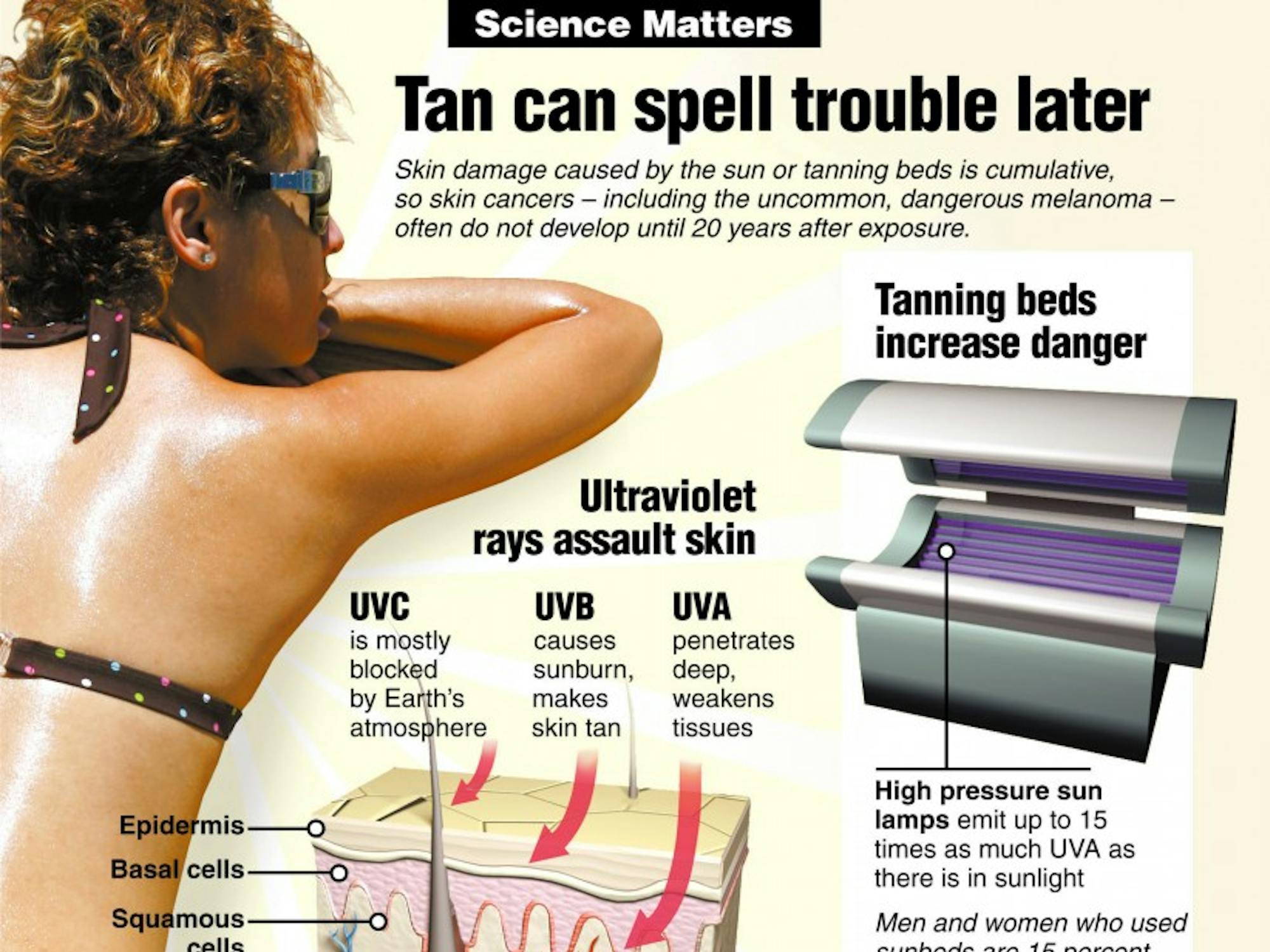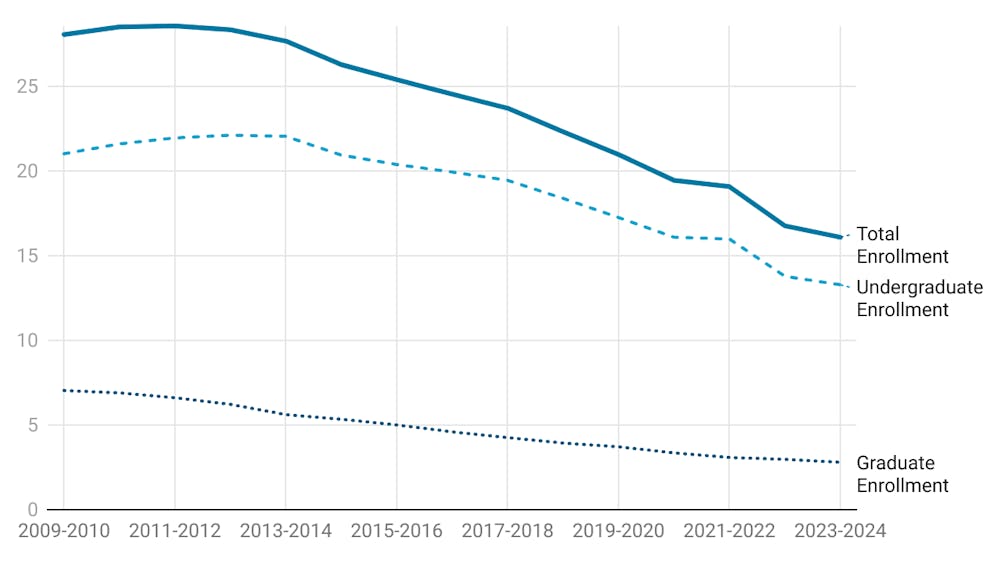Tanning your skin is a luxury that countless white women in the U.S. indulge in on almost a weekly basis to fit an arbitrary standard of beauty, but one should be careful. Overusing such powerful ultraviolet rays can turn the glamorous into cancerous.
From 1970 to 2009, the incidence of melanoma increased four-fold among young men, but it increased by a whopping eight-fold among young women, according to a study conducted by Mayo Clinic. Although there’s not an inherent need for women to tan more often than men, it’s a socially-influenced phenomenon that has duped women into thinking beauty is only achieved for the pasty people by cosmetically discoloring their skin.
When did we get this notion in our society of fair skin as a flaw? Mainstream media is the most powerful dictator of beauty standards. Coco Chanel changed the outlook of bronze skin in 1929 by declaring “A girl simply has to be tanned.” This fashion trend changed the perception of tan skin as a representation of a lower socio-economic status, forged from performing the outdoor labor of simple folk, into a chic indicator of the wealth of a well-vacationed woman.
Based on seven worldwide studies conducted by health organizations, people who first used a tanning bed before age 35 increase their risk for melanoma by 87 percent, according to an April 3 article on Jezebel.com. Melanoma is the deadliest form of skin cancer, and the World Health Organization doesn’t recommend you use cosmetic tanning beds at all.
Ashley Delgado, 23, an EMU alumna, used to be an avid tanner. She would tan up to three times a week, and had even gone twice in one day. She said in her experience at the tanning parlor, she felt more confident as her skin darkened through the brown spectrum.
“I hated to be pale, or what I thought was pale, because that somehow made me ugly,” Delgado said. “I acted compulsively and had no idea that I was doing severe damage to my body.”
The mass media perpetually creates unattainable standards of beauty. Women end up paying the price by cooking their skin in an ultra-violet oven, only to be spotted with cancer and poisoned by the radiation.
In movies, TV shows and advertisements, music videos and magazine models, women see what is represented as beautiful through the people they see on screen or in print. Female models tend to show skin that is a perfect shade of bronze among other unnatural characteristics, like extreme thinness.
The most obvious evidence our fascination with skin darkening treatments is socially constructed is that other cultures have opposite views. Asian cultures view tan skin as unattractive; some people in Asian countries walk around with umbrellas or large hats to block out the sun and spend thousands of dollars every year on skin-lightening products.
The price of beauty isn’t and shouldn’t be a cancer risk, for it is only skin deep. If you think lying in a coffin of faux sunlight makes you pretty, you are subjecting yourself to harsh UV radiation and perhaps taking the chance of living a shortened life.










